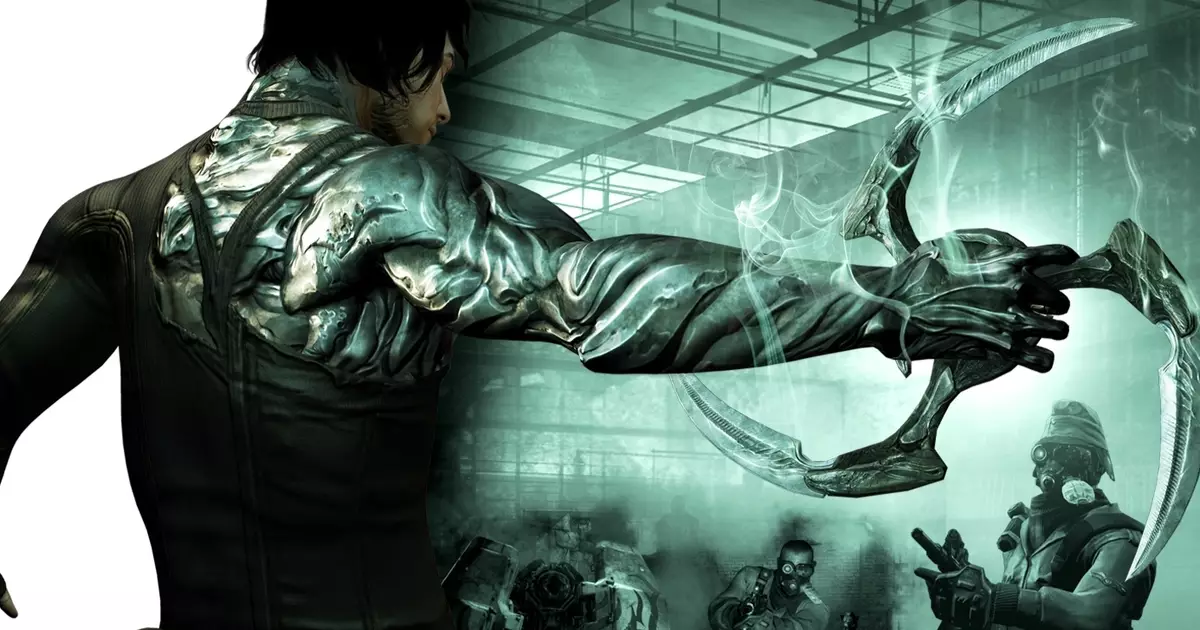In the annals of video game history, few titles manage to encapsulate the essence of an era quite like Digital Extremes’ 2008 release, Dark Sector. Initially known for their collaboration with Epic Games on the highly acclaimed Unreal Tournament series, the studio ventured into original game development with a product that, while not groundbreaking, served as a stepping stone in their evolution. Set against a backdrop of gritty realism and filled with bioweapons dubbed “Technocyte,” Dark Sector introduced players to a world plagued by chaos, with the protagonist wielding a unique weapon—the glaive. This sharp, boomerang-like object allowed players to tackle various challenges, from solving puzzles to engaging in combat, albeit in a third-person perspective. Despite its interesting mechanics, Dark Sector has faded into relative obscurity, failing to leave a lasting impression on the gaming landscape.
Dark Sector’s release came during a period when video game narratives often mirrored the overwrought plots of contemporary action films. The mid-2000s saw a proliferation of games that embraced gritty aesthetics and brooding protagonists, with developers attempting to draw players into stories reminiscent of less-exceptional Hollywood offerings. Despite its apparent ambition to tell a “relatable” story, Dark Sector’s narrative execution felt more like a collection of tropes than a cohesive, engaging experience. By dialing back the original sci-fi concept for a more earthly affair, the developers inadvertently constrained their creativity. This decision, while understandable within the industry’s trends at the time, arguably stripped the game of its potential to be memorable in a saturated market.
Though Dark Sector was met with mediocrity upon its release, its legacy has experienced a renaissance of sorts, particularly when viewed through the lens of Digital Extremes’ subsequent success with Warframe. This free-to-play action game—melding intricate combat mechanics with a vibrant sci-fi universe—owes a certain debt to its predecessor. Originally conceived from the remnants of Dark Sector’s imaginative ideas, Warframe transformed the creative seeds sown during the development of its ancestor into something much grander and more engaging. The glaive, one of the standout features from Dark Sector, reappears in Warframe in an enhanced form, serving as a nod to players who appreciate the studio’s history.
In celebration of Warframe’s upcoming expansion, which promises to delve into the historical depths of its lore while tracing back to themes reminiscent of Dark Sector, Digital Extremes has made the earlier title available for free on Steam for a limited time. This promotion serves not only as a clever marketing tactic but also as a bridge connecting old and new players to the studio’s evolving narrative and gameplay possibilities. However, as the studio looks forward, many fans—including myself—find ourselves curious about Digital Extremes’ upcoming fantasy RPG, Soulframe. The transition from the sci-fi settings of Warframe to a more fantasy-oriented approach opens up exciting avenues for storytelling and game design.
As we reflect on Dark Sector, it becomes apparent that the game, despite its shortcomings, played a crucial role in shaping the identity of Digital Extremes. While the title might not shine brightly in the pantheon of video game history, it holds a pivotal connection to the vibrant universe of Warframe, which has garnered a passionate following over the years. In a gaming landscape that constantly evolves, recognizing and celebrating the origins of successful titles is essential. As players embrace the legacy of Dark Sector through the modern lens of Warframe and anticipate the promise of Soulframe, it’s clear that even the most unassuming games can lay the groundwork for innovative futures in the interactive entertainment realm.


Leave a Reply